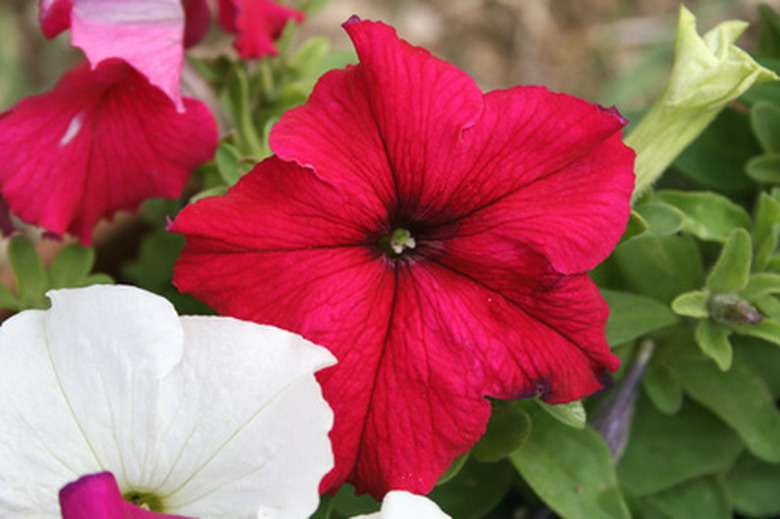Small Green Bugs On My Petunias
Are you noticing small green bugs on your garden petunias (Petunia x hybrida, USDA zones 10-11)? While this low-maintenance plant generally is pest-resistant, it sometime attracts small green bugs called aphids. Petunias bring non-stop, colorful, often fragrant long-lasting blooms to the landscape and are available as bushy or trailing plants. Their flowers may be single and funnel-shaped, spherical with dense double petals or a variety of other forms. Petunia colors range from white and pale yellow to rich purples, clear blues and a host of pinks, reds and bi-colors.
Small Green Bugs on Petunias
Small Green Bugs on Petunias
If you see small green bugs on your petunias, you're likely seeing an aphid infestation. Aphids are tiny insects, typically less than 1/8-inch long, and are pear shaped. Most aphids are green to yellow-green and wingless. Large populations on insects on a single petunia, however, grow wings and move to other plants.
Aphids have long legs, antennae and mouthparts designed for piercing a plant to feed on its juices. They cling to the lower surface of new leaves or the undersides of stems. Aphids will often remain attached to the plants even when disturbed.
Symptoms of Aphid Infestations
Symptoms of Aphid Infestations
Aphids are most numerous in the spring, when petunias put out new growth. Infestations are possible, however, at any time during the growing season. Infested petunias develop wrinkled or curled leaves and misshapen flowers. Aphids also excrete a sweet, sticky waste product called honeydew. Ants flocking to your petunias to feed on the honeydew are a telltale sign of aphid infestations.
Damage to Petunias
Damage to Petunias
Small numbers of aphids seldom cause more than cosmetic damage to petunias. Large numbers of the insects, however, produce enough honeydew to attract a fungus called sooty mold. As this fungus feeds on the honeydew, it covers the petunia leaves with a powdery, black mold. A severe case of sooty mold may impair the petunia's photosynthesis, and deprive it of nutrients.
Cucumber Mosaic Virus Issues
Cucumber Mosaic Virus Issues
Petunias are vulnerable to the aphid-transmitted cucumber mosaic virus. Signs of this disease include curled yellowed or spotted leaves and stunted plants. Even small aphid infestations can carry the virus. If you have a vegetable garden, plant your petunias well away from your cucumbers. Choose virus-resistant petunia varieties to reduce the risk of disease.
Monitoring Aphid Infestations
Monitoring Aphid Infestations
Track your petunia aphid problem weekly during the growing season. Study the plant's new stems growth and their leaves' lower surfaces with a 10X magnifying glass. Place a white piece of paper beneath a plant before you examine it. A sharp tap on the foliage will loosen the insects' grip. The number of aphids landing on the paper indicates the severity of the infestation.
Homemade Aphid Control
Homemade Aphid Control
If the aphid population is high, treating the plant can get rid of the pests and reduce the risk of additional complications. A steady stream of water sprayed on the plant will dislodge the aphids.
Insecticidal Aphid Control
Insecticidal Aphid Control
You can also use an insecticide formulated for aphids for severe infestations. Insecticidal soap and neem oil are two low-toxicity options that are safer than other chemical insecticides. No matter what type of insect control product you use, read the instructions thoroughly and follow them precisely. That includes the mixing directions and frequency of application.
